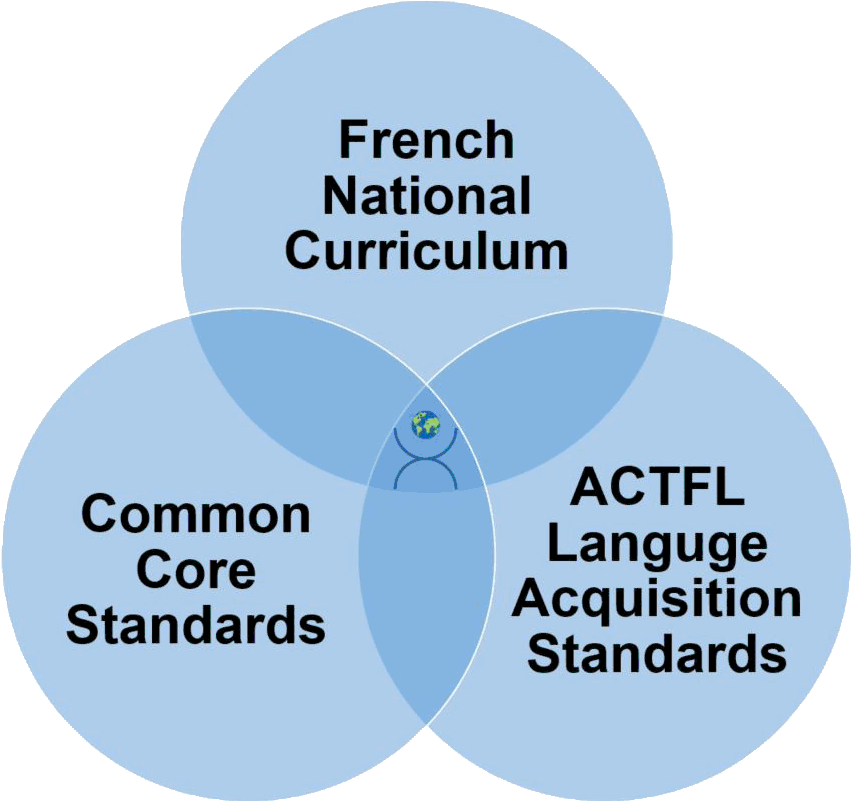Curriculum Framework
 The curriculum of Austin International School is unique in the world of international education and we are the industry leader in the field of immersive, seamless, trilingual education. Our curricular units are developed through the collaborative efforts of our multinational educators who bring together the best from various educational systems around the globe. Essential to the success of our program is alignment with internationally recognized standards for educational excellence.
The curriculum of Austin International School is unique in the world of international education and we are the industry leader in the field of immersive, seamless, trilingual education. Our curricular units are developed through the collaborative efforts of our multinational educators who bring together the best from various educational systems around the globe. Essential to the success of our program is alignment with internationally recognized standards for educational excellence.
French National Curriculum
The backbone for the AIS curriculum is the French National Curriculum published and maintained by the French Ministry of Education. The French National Curriculum has a longstanding tradition of academic excellence and encouraging student preparedness for undergraduate studies in countries across the globe. AIS employs top rated educators who are specifically trained in the delivery of the French national curriculum, but who are also prepared to work in collaboration with teachers from other systems to enhance their lessons through seamless integration of other pedagogical methodologies, resources, and experiences.
Learning is divided into a series of cycles prior to entry into high school (le lycée):
- Cycle des apprentissages premiers (PS, MS, GS)
Early learning cycle (Pre-K3, Pre-K4, Kindergarten) - Cycle des apprentissages fondamentaux (CP, CE1, CE2)
Foundational learning cycle (1st, 2nd, and 3rd grades) - Cycle de consolidation (CM1, CM2, 6e)
Consolidation of learning cycle (4th, 5th, and 6th grades) - Cycle des approfondissements (5e, 4e, 3e)
In-depth learning cycle (7th, 8th, and 9th grades)
Learning objectives for each grade level and each subject are established by the French Ministry of Education and common resources are provided to all schools around the globe. By learning in this system, students may transfer comfortably between French National Curriculum schools around the globe.
Common Core State Standards (CCSS)
The objective of the Common Core State Standards (CCSS) Initiative, developed in the United States, is to establish the minimum language and mathematical profiency levels that college-bound students should have at each grade level, starting from Kindergarten. AIS has adopted the most important and relevant components of this initiave and through their collaborative work, AIS's educators establish curricular links between the French National Curriculum and the Common Core State Standards (CCSS). As an independent educational institution, AIS enjoys the flexibility to adopt and adapt the standards that are most relevant to our students and their learning.
The CCSS skills-based components for each subject area are:
- English Language Arts: reading; writing; speaking and listening; language; media and technology. The standards in this area also work to develop literacy skills in social studies, sciences, and technical subjects.
- Mathematics: make sense of problems and persevere in solving them; reason abstractly and quantitatively; construct viable arguments and critique the reasoning of others; model with mathematics; use appropriate tools strategically; attend to precision; look for and make use of structure; look for and express regularity in repeated reasoning.
Students' progress against these standards is measured three times annually through the computer-based Measures of Academic Progress (MAP) tool. The MAP results provide instructors and families with important information about student growth against these standards and also allow for a comparison against schools similar to AIS.
For more information about these elements of our curricular framework, please consult the websites of the Common Core State Standards Initiative and NWEA's Measure of Academic Progress.
American Council on the Teaching of Foreign Languages (AFTCL)
For the language acquisition components of our academic program, AIS has adopted the American Council on the Teaching of Freign Languages' (ACTFL) standards for 21st century foreign language learning. The standards outlined by the organization are focused on developmental goals in five areas referred to as The Five Cs of Foreign Language Education. ACTFL defines the Five Cs as follows:
- Communication "is at the heart of second language study, whether the communication takes place face-to-face, in writing, or across centuries through the reading of literature."
- Cultures. "Through the study of other languages, students gain a knowledge and understanding of the cultures that use that language and, in fact, cannot truly master the language until they have also mastered the cultural contexts in which the language occurs."
- Connections. "Learning languages provides connections to additional bodies of knowledge that may be unavailable to the monolingual... speaker."
- Comparisons. "Through comparisons and contrasts with the language being studied, students develop insight into the nature of language and the concept of culture, and realize that there are multiple ways of viewing the world."
- Communities. "Together, these elements enable the student of languages to participate in multilingual communities at home and around the world in a variety of contexts and in culturally appropriate ways."
